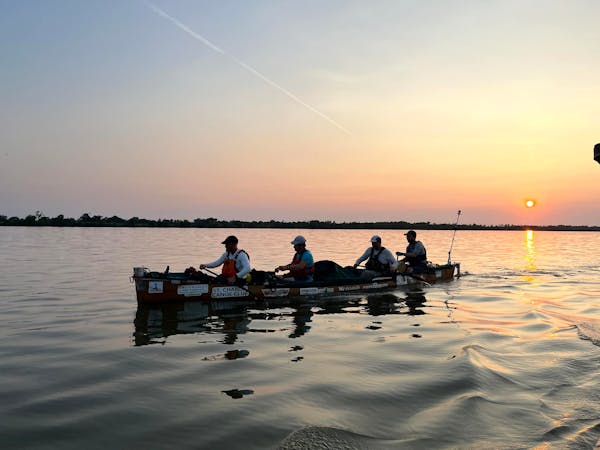Bicyclists in Minnesota will soon have some legal cover for doing what many of them are probably already doing — choosing at times to keep rolling rather than coming to a halt at a stop sign.
Thanks to a provision in newly enacted transportation finance legislation, bicyclists approaching a four-way stop intersection can treat their sign as saying yield, scan for other vehicles while slowing down and continue to roll through if clear. The new law kicks in on Aug. 1.
The change, named the Bill Dooley Bicycle Safety Act for the longtime bicycling activist, was inspired by what's known across the nation as the "Idaho Stop." In 1982, the northwestern state started allowing riders to roll through stop signs and even red lights when safe to keep going. At least a dozen states have enacted some version of this law.
An oft-cited study by the University of California-Berkeley found that traffic is made safer by relaxing the stopping rules for bicyclists and legalizing the already existing behavior. The "Idaho Stop" reportedly reduced biking accidents by 14.5% in the first year after its enactment in that state.
Delaware adopted a more limited stop-as-yield law, known as the "Delaware Yield." Traffic crashes involving bicyclists at stop sign intersections fell by 23% in the 2 1⁄2 years after the law's passage, compared to the previous 2 1⁄2 years, according to the National Highway Traffic Safety Administration.
Dorian Grilley, executive director of the nonprofit Bicycle Alliance of Minnesota, said last week that the new rules match "what's accepted practice just about everywhere. This makes it safer by clarifying the rules."
Grilley, whose alliance worked closely with legislators and state transportation and public safety leaders on the wording, added, "Most bicyclists right now don't stop at stop signs. They treat them as yield signs. Some don't even treat them as a yield."
Here's how the Minnesota law reads in part: "A bicycle operator who approaches a stop sign must slow to a speed that allows for stopping before entering the intersection or the nearest crosswalk. ... If there is not a vehicle in the vicinity, the operator may make a turn or proceed through the intersection without stopping."
As for red lights, current law says that bicyclists can continue to come to a complete stop before starting up anew and going through the intersection before the light turns green.
Certain turns on red also will be allowed, matching for decades what motor vehicles can choose to do safely: Make a right-hand turn or a left-hand turn onto a one-way road.
"For me, it's about setting very clear expectations," said Elissa Schufman, who chairs the Minneapolis Bicycle Advisory Committee. "And when you have clear expectations, people's behavior becomes more predictable, whether it's the person on a bike or in a vehicle."
Schufman, a four-season rider whose committee's mission is to expand bicycling in the city, said, "I think every person I know who bikes just wants to be safe and enjoy their bike ride. This [new law] really encourages people to make choices to support their chance to be safe."
The Associated Press contributed to this report.
Former DFL Senate Majority Leader Kari Dziedzic dies of cancer at age 62

How the Star Tribune is covering the 2024 election

Fact check: Walz and Vance made questionable claims during only VP debate

In Tim Walz's home city, opposing groups watch him debate on the national stage

